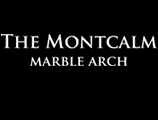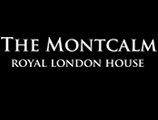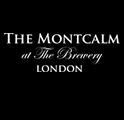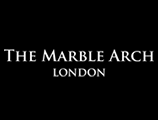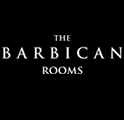Like it or not, something London visitors often overlook is it’s a city jam-packed full of all kinds of different attractions. Not just, say, big, obvious museums like the British Museum and the Natural History Museum, but unique smaller museums, too, that are more than worth visiting for all the curiosities they focus on and exhibit.
So, then, here are the best of the UK capital’s most unique museums – and all the weird and wonderful things you can discover within their walls during a stay at The Montcalm Chiswell Street…
Horniman Museum
(Forest Hill)
Of all the most eclectic of London museums, the Horniman’s maybe the one to top your family’s must-visit list – it’s simply sublime for little ones. Not only does it have a room devoted to all manner of musical instruments (and the trying out of them), but also features stuffed examples of living and extinct beasts from around the world (including an imposing but grand giant walrus), intriguing and fascinating artefacts of all different kinds and glorious gardens in which kids can let off steam and picnic on sunny afternoons.
Handel and Hendrix in London
(Mayfair)
A bizarre coincidence it may be, but it’s also absolutely true that – around 200 years apart – the legendary classical composer Georg Frederic Handel and the iconic 1960s guitarist Jimi Hendrix lived at the same London address. Today, this Mayfair house serves as a museum dedicated to the memory of them both and, of course, to the two very different eras in which they lived here – areas are even furnished to look how they would have done when either lived in the place. A unique attraction to browse around if you’re in town staying at business hotels in London? No question.
Dennis Severs’ House
(Spitalfields)
This East London destination’s an absolute treasure trove of wonderful, unexpected items. Indeed, to visit this house, the one-time home of, yes, Mr Severs (who came from a long line of moneyed Huguenot silk-weavers) is to step into a time capsule, but one with a difference, in that it’s like several time capsules – from the early 18th Century up to the start of the 20th. That’s because it’s packed full of all the extraordinary items that Severs devoted much of his life to collecting and curating in his home to create several kinds of ‘still-life drama’. Unique and fascinating.
Fashion and Textile Museum
(Bermondsey)
An absolute must-visit for anyone coming to London (and booking at discount hotels London) interested in fashion and design, obviously, this attraction keeps abreast with all the changes that define the culture and industry of its subject matter, in that after each single exhibition it hosts closes, it will shutter its doors for a few weeks and then reopen… with a brand-spanking new exhibit to wow the senses. Be sure, then, to make sure it’s open when you’re in town and, if it is, just what it may be exhibiting.
London Canal Museum
(King’s Cross)
Don’t be put off with the notion canals are drab and dull and visiting a museum dedicated to those that run through London would be a waste of your time – because nothing could be further from the truth. The fact is that, before the establishment of the train network in the UK (and, especially, before roads and their vehicles became commonplace), canals were the freight transport veins of the country, too, which means they played a critical role in the history of London’s early industrial age – an era when the place first became one of the most essential cities on Earth.
Fittingly located in a former ice warehouse (built in the second half of the 19th Century and once serviced by canal boats), this museum is a hive of artefacts and activity in the name of canal history; here, you can attend talks, family-focused fun activities, guided towpath walks and trips through the nearby canal-based Islington Tunnel.
The Cartoon Museum
(Fitzrovia)
Nothing beats an attraction that delivers simple joy and fun – and a little bit of thought, too. Step forward, then, the Cartoon Museum. A nugget of nostalgia for the two-dimensional fantasy, frivolity and satire of the scribbled universe, it offers up an ever-changing exhibit of UK-created cartoons, comic strips and animations, courtesy of household names like The Beano and The Dandy and well-known cartoonists like Giles and Steve Bell. Revenues from the museum go to help the careers of up-and-coming cartoonists and comic artists, too.
Pollock’s Toy Museum
(Fitzrovia)
If you’re with the kids during your stay at family suites London, you might as well remain in Fitzrovia after your jaunt to the Cartoon Museum to delight the little ones with a visit to this place, the oldest toy museum in Britain, which has now been in existence for almost 70 years. As such, its collection is diverse, indeed, with rare but well-recalled toys, dolls, puppets and curios from every corner of the globe – including one of the world’s very oldest teddy bears. Saved from closure during the pandemic thanks to a crowdfunding campaign (take a bow, keyboard warriors), rumour has it that it was a source of costume-inspiration for regular visitor David Bowie.
The Garden Museum
(Lambeth)
Housed in the one-time-abandoned St Mary’s church in Lambeth, this museum is all about celebrating that most quintessential of UK things, the British garden, and educating visitors about all their ins and outs, via an array of permanent and temporary exhibitions. Naturally, you’ll want to check out the lovely and serene courtyard garden, too. Something of a haven for those with green-fingers, you might say.
Leighton House Museum
(Holland Park)
Finally, no list of curious museums in London housing unexpected delights would be complete without this one. Once the home of Victorian artist Lord Frederic Leighton, it’s a beautiful abode and is worth visiting alone for its sublime collection of paintings and sculptures including works by Burne-Jones, Millais, Stevens and Alma-Tadema. Yet, what really sets it apart is its *piece de resistance*, the truly breath-taking sight that’s the Arab Hall; coated, as it is, in more than 1,000 mosaic tiles that were collected by Leighton from Syria, Turkey and Persia before being put to use to decorate his home. Extraordinary stuff.



















